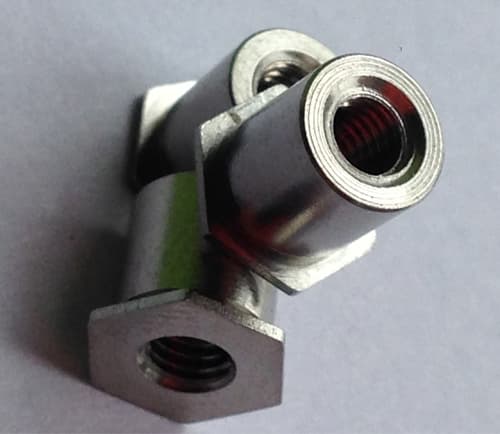Self Clinching Nuts, also known as Rivet Nuts, are Self-clinching Nuts, which are a kind of nuts applied to thin plates or sheet metals. They are round in shape, with embossed teeth and guide grooves at one end. The principle is to press the embossing teeth into the preset holes of the sheet metal. Generally speaking, the aperture of the preset holes is slightly smaller than the embossing teeth of the rivet nut. The periphery of the hole is plastically deformed, and the deformation is squeezed into the guide groove, and then the locking effect occurs.

Pressure riveting means that during the riveting process, under external pressure, the pressure riveting parts cause the base material to undergo plastic deformation, and then squeeze into the special prefabricated grooves in the riveting screw and nut structure, and then complete the reliability of the two self clinching fasteners. There are two kinds of non-standard nuts for pressure riveting, one is pressure riveting nut column and the other is pressure riveting nut. If this riveting method is used to complete the connection with the base material, this riveting method generally requires that the hardness of the riveted parts be greater than that of the base material.
Ordinary low-carbon steel, aluminum alloy plate, and copper plate are suitable for crimping standoffs. For stainless steel and high-carbon steel plates, because of their relatively hard materials, special high-strength standoffs are required, which are not only expensive, but also press It is difficult to connect, the crimping is not reliable, and it is easy to fall off after crimping. In order to ensure reliability, the manufacturer often needs to add welding to the side of the nut stand. Gold parts should not be made of stainless steel as much as possible. This is also the case with rivet screws and rivet nuts, which are not suitable for use on stainless steel plates.
Riveting means that during the riveting process, part of the material of the riveted screw or nut undergoes plastic deformation under the action of external force, and forms a tight fit with the base material, thereby completing the reliable connection of the two parts. The commonly used ZRS, etc. is to use this type of riveting to complete the connection with the base material. The expansion riveting process is relatively simple, and the connection strength is low. It is generally used in situations where the height of the fastener is limited and the acceptable torque is not large.
Pull riveting means that during the riveting process, the riveted part undergoes plastic deformation under the effect of external tension. The deformation position is generally at a specially designed part, and the reliable connection is achieved by clamping the base material at the deformed part. Commonly used rivet nuts use this type of riveting to complete the connection with the base material. Blind riveting uses a special riveting gun for riveting, and it is mostly used in situations where the installation space is small and general riveting tools cannot be used, such as closed pipes. We also have self clinching nuts for sale, check our website if you need them.